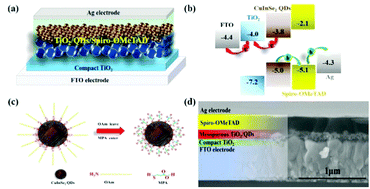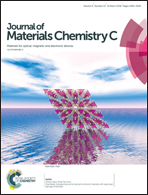Broadband hybrid organic/CuInSe2 quantum dot photodetectors†
Abstract
“Green” narrow band-gap CuInSe2 quantum dots (QDs) were first introduced in photodetectors. Thus, a broadband hybrid photodetector was obtained by combining the ultraviolet detection of spiro-OMeTAD and the near-infrared detection of CuInSe2 QDs. In order to improve the detection of the device, the oil-soluble CuInSe2 QDs were transformed into water-soluble MPA-capped QDs through ligand exchange, which drastically shortened the length of the surface ligand. The specific detectivity (D*) of the photodetector reached 1.6 × 1012 Jones at 330 nm and 7.5 × 1010 Jones at a 1000 nm wavelength. The unencapsulated device also displayed a fast response time (<0.02 s) and excellent thermal stability (20–100 °C) in ambient air. This work could open a window of toxic-free QD based photodetectors to achieve a broadband response.



 Please wait while we load your content...
Please wait while we load your content...